Email marketing delivers a strong return on investment (ROI), boasting an impressive 36:1 ROI compared to other marketing channels. But what if your email strategy could guide subscribers from their initial interest in signing up for your newsletter, all the way to becoming loyal, repeat customers?
That’s where the email marketing funnel comes in—a framework that supports subscribers through every stage of the customer journey, which doesn’t stop once you’ve earned their business.
In this blog, we’ll explore how to optimize your email funnel to turn subscribers into lasting connections and loyal advocates:
- What is an email marketing funnel?
- Anatomy of a modern email marketing funnel
- How to build an email funnel
- Industry-specific email funnels & examples
What is an email marketing funnel?
An email marketing funnel guides subscribers through the email customer journey—from prospective leads to loyal customers.
It charts the path from the buyer’s journey to the broader customer experience, where they grow into repeat buyers and ultimately loyal advocates, using email as a primary touchpoint.
You might be wondering: isn’t email merely a reflection of a single conversion point in the marketing funnel? It’s much more than that: email reflects the entire marketing funnel.
Email is a full-funnel experience
Email marketing operates as a complete funnel for activity, engagement, and trust-building at every stage of the buyer’s journey. It requires diverse programs and optimization strategies, such as engaging your top-of-funnel (ToFu) audience then guiding them into higher-intent segments.
What sets it apart from other channels (like social media, paid ad, or SEO) is its inherently permission-based nature; subscribers have actively chosen to hear from you by raising their hands and subscribing to your email list.
According to The Ehrenberg-Bass Institute’s 95 to 5 rule, 95% of your audience isn’t in a buying cycle right now, but they will be “in-market” in the future. This highlights the importance of nurturing your audience through the customer journey.
“This ties back to the idea of email being a full-funnel experience, fostering intimacy with your audience and focusing on brand awareness.
Building relationships through email requires looking at multiple events over time, as customer journeys can take years to develop, not just weeks or months. Email is essential for brands and organizations to stay in touch and nurture their audience throughout this journey.”
Email consistently ranks as the most powerful channel in our State of Email surveys, and this year was no exception. Yet, 72% of marketers don’t know their email marketing ROI, despite a strong majority considering (52%) it their most effective channel. So, what metrics are they using?
Anatomy of a modern email marketing funnel
The marketing funnel has gone through many iterations since it first came into fruition in 1924. Overtime, new layers and concepts were introduced as modern businesses began recognizing the importance of customer lifetime value—like the buyer’s journey and the customer experience funnel.
Today, the email marketing funnel encompasses much more than the initial sale: it reflects every stage of the customer journey, using email as a vital touchpoint to nurture advocacy.
Retaining customers and fostering their loyalty are essential components of the email funnel. Unlike a traditional marketing funnel that begins with awareness through more ToFu channels like social media and SEO, the email marketing funnel kicks off only after a prospect has subscribed to your brand. In other words, it starts once they’ve opted into your mailing list.
The goals for each stage of the email funnel will look like the following:
- Awareness. Introduce new subscribers and potential customers to your brand, product, or service through your email marketing campaigns.
- Engagement. Encourage subscribers to interact with your emails by sending valuable content.
- Consideration. Provide information that guides subscribers in considering your product or service through your emails.
- Conversion. Drive subscribers to take action in your email marketing campaigns, such as purchasing a product or service.
- Onboarding. Ensure new customers maximize their experience with smooth onboarding (which can take form as an automated onboarding series).
- Retention. Keep customers engaged and satisfied, encouraging repeat business through a series of email campaigns for this specific segment of your subscribers.
- Loyalty/advocacy. Turn satisfied customers into brand advocates by keeping the two-way communication alive through email.
- Reactivation/win-back. Re-engage inactive customers and bring them back into the customer lifecycle, using email as a key touch point.
How to build an email funnel
Each stage of the funnel serves a unique purpose, helping to nurture relationships, drive conversions, and ultimately build customers for life. Let’s break down each stage of the email marketing funnel with examples of what engaging content can look like at each stage.
- Awareness: welcome emails, newsletters, and educational content
- Engagement: personalized content and more educational content
- Consideration: product demos, case studies/testimonials, comparison guides, customer reviews
- Conversion: offers, product launches, cart abandonment emails
- Onboarding: onboarding email series
- Retention: post-purchase drip campaigns, product recommendations, loyalty programs, milestone emails, anniversary and birthday emails
- Advocacy: referral program, collecting feedback, resources
- Reactivation/win-back: win-back campaigns
Awareness stage: the start of the email funnel
So, a subscriber has recently joined your email list—awesome! Perhaps they’ve joined your list from a lead magnet on your website or a landing page from an ad running on your social media channels. Either way, since email is a permission-based channel, you’re starting with a leg up.
Subscribers fill in opt-in forms because they want to hear from you, meaning they’ve given you explicit consent to receive marketing emails from you. In the awareness stage—the very first stage of the subscriber journey—your goal is to introduce your brand and start building trust (vs. a hard sell).
What do awareness stage emails look like? They can take form in the following ways:
- Educational content: emails featuring blog posts, reports, guides, or videos that address customer pain points and provide valuable insights.
- Newsletters: regularly scheduled emails that highlight your expertise, share industry news, and offer resources or helpful tips.
- Welcome emails: sent to new subscribers who have shown interest in your brand, offering a warm introduction and a “thank you” for joining (e.g. a special welcome offer—like a discount on the first purchase or free shipping). This can look like a series of emails or a single email.
Consider incorporating these tactics and strategies into your emails during the awareness phase:
- Share your “why.” Highlight your company mission and values, demonstrating how your product or service addresses subscriber pain points.
- Set subscriber preferences. Use this opportunity to establish what types of content your subscribers are interested in and how often they want to hear from you. This approach not only enhances their experience but also provides valuable zero-party data—a win-win!
- Capture first-party data. Use live polls to gather insights on interests to help you learn more about their preferences, while also giving subscribers a chance to share their voice.
Supergoop sends a warm welcome to newsletter subscribers with a letter from their CEO with a nod to their company mission “help change the way the world thinks about sunscreen,” along with a discount:
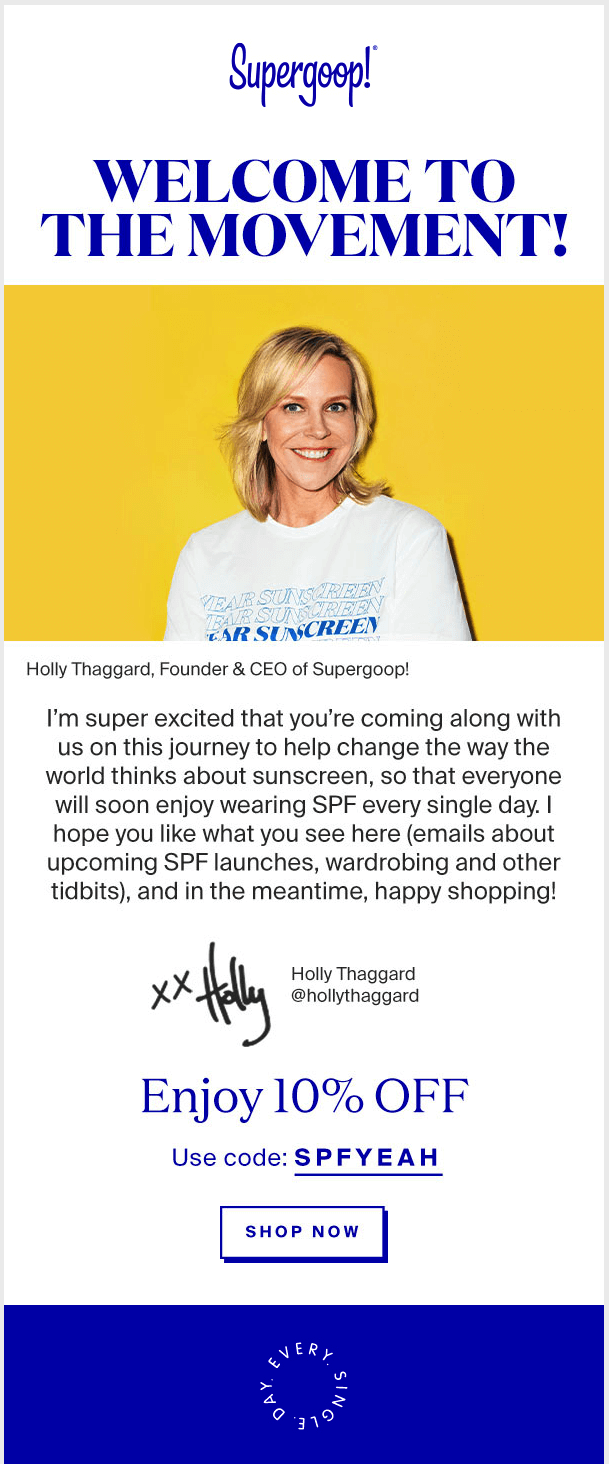
“There are two things I love about Supergoop’s initial newsletter email—the personal welcome and the information about what’s to come. Being able to put a face to the brand and why the CEO believes in the company makes it easier to connect. It’s also nice that they give a preview of the type of content they send so subscribers know what to look out for.“
Engagement stage: encourage interaction with valuable content
Once subscribers have warmed up to your brand in the awareness stage, it’s time for the next step of the email funnel: the engagement stage. Here are a few effective strategies to encourage interaction:
- Include high-value, relevant content. Share informative and engaging content, such as how-to guides, reports, blog posts, video tutorials, expert interviews, podcasts, or industry insights, that resonate with subscriber’s interests and needs.
- Personalize content based on data. Tailor your emails based on subscriber preferences and behaviors (either demographic, inferred, or explicitly shared via zero- or first-party data). This can look like rule-based images or content automation by way of product recommendations.
- Personalize your emails in real-time/at time of open. Don’t just personalize by first name; go beyond merge tag personalization with emails that update when they’re opened with the latest content. Email personalization tools like Litmus Personalize make it simple to set up location-based personalization and emails with the latest weather forecast.
- Tap into click-boosting tactics. Create a sense of FOMO (fear of missing out) by incorporating Interest Signals (e.g. “50 shoppers are checking this out!”). Some Litmus customers have seen a 116% increase in click-through rates (CTR) using this approach. Additionally, live polls have proven effective; marketers have reported a 53% rise in CTR, with some even doubling their rates!
Harness the power of email personalization
Create 1:1 experiences using email personalization that goes beyond “Hello, %%first_name%%” with dynamic and real-time content.
Consideration stage: showcase and demonstrate your offerings
Not all subscribers will become customers, but if they’ve made it onto your email list and have been opening and engaging with your series of emails, there’s a higher chance they’ll convert. Once a subscriber enters the consideration stage, they transition from being a subscriber to a prospect, providing an opportunity to capture leads.
Potential customers are actively evaluating your products or services to determine if they meet their needs. This is your opportunity to provide compelling evidence that sets you apart from the competition. By showcasing the value of your offerings through your email program, you can help guide their decision-making process.
Here are some strategies and content ideas to fold into these emails:
- Product demos: provide video or interactive demonstrations that show the benefits of your product or services, highlighting their features and benefits.
- Case studies/testimonials: showcase success stories, customer testimonials, case studies, social proof, and positive experiences from satisfied customers, building trust and credibility.
- Comparison guides: content that compare your offerings with those of competitors, helping customers make informed decisions based on clear advantages.
- Behind-the-scenes content: provide a glimpse into your company’s processes, values, or the people behind your products, helping to build trust and connection.
- How-it-works content: explain the functionality behind your products or services, addressing common questions and concerns to ease the decision-making process.
Conversion stage: turn leads into customers
The conversion stage of the email marketing funnel comes into play when potential customers are primed to make a purchase or convert. Subscribers are on the brink of decision, and your emails are vital for creating confidence in your product and services—and urgency to convert.
This is the moment to leverage your email content to provide that final nudge needed to convert leads into paying customers.
Email communication that works well at the conversion stage of the email funnel includes:
- Promotional offers: send exclusive discounts, limited-time offers, or special promotions to incentivize purchases and create urgency with a clear “buy now” message and strong call to action (CTA).
- Free trials/consultations: invite prospective customers to experience your product or service at no cost, or offer a consultation to showcase your expertise and make a persuasive sales pitch, including detailed pricing information.
- Abandoned cart emails: reach out to customers who leave items in their shopping carts without completing their purchase, encouraging them to return and finalize their transaction.
By frequent A/B email testing, you can significantly improve your conversion rate and maximize the impact of your digital marketing efforts.
Onboarding stage: the start of a new relationship
Congratulations—your subscriber has officially become a customer! Now it’s time to set the stage for what they can expect moving forward. While this isn’t the first time they’ve heard from you, the onboarding phase is just as crucial as that initial introduction. Your new customers have entered your world, and it’s your job to be a gracious host.
To keep them engaged and foster customer loyalty, they need to see immediate value in what you offer. Your first email in the onboarding series should make a strong impression, highlighting how to get the most out of your product.
It doesn’t have to be a series of emails, either. Determine what works best for your brand—a single, comprehensive onboarding email can be just as effective. This onboarding email from Stark illustrates this effectively:

A carefully crafted series of onboarding emails will guide them through their initial experience. The goal is to make it as easy as possible for them to navigate your product or service. This approach is key to enhancing customer retention and ensuring long-term satisfaction.
Onboarding emails are great contenders for marketing automation: set up a follow-up, triggered email (or email series) that sends once a subscriber converts from a prospect to customer.
Retention stage: keep customers engaged and satisfied
At the retention stage, the focus shifts to nurturing your existing customers and ensuring they remain engaged and satisfied with your brand. Effective retention strategies not only encourage repeat business but also foster long-term customer loyalty.
“Retention is certainly part of creating better customers. But it’s also about improving brand engagement and expanding accounts and growing sales and increasing product and service usage. So all of those elements seem to kind of win out over this broader concept of retention. But if you’re doing those other things, you’re also improving retention.”
This is where you can encourage repeat business through a thoughtfully designed series of email campaigns tailored for this specific segment of your email subscribers.
With a sound email segmentation strategy, you can deliver personalized content that resonates with their interests and needs. Especially if you’ve set up first-party data capture points (e.g. with live polls), now is the perfect time to let that data shine and work for you.
Your email service provider (ESP) is a great starting point for segmentation, but to refine your strategy, consider an email marketing analytics tool like Litmus Email Analytics for advanced audience insights like email read rates, mobile vs. desktop engagement, and more.

A/B testing will help you refine your messaging and identify the emails that convert best, ensuring that your communications remain relevant and effective. Remember, satisfied customers are more likely to advocate for your brand and refer others, creating a cycle of engagement that drives growth.
To measure retention, make cross-functional friends
Customer retention doesn’t happen in a vacuum. The first step to getting aligned on KPIs is working across teams.
- Set up time to talk to other departments, like customer success and sales, about their goals and challenges
- Plot out the entire customer lifecycle and multi-channel touchpoints with other departments to identify gaps
- Regularly share email insights and listen to other teams about what they learn
Examples of customer retention emails include:
- Post-purchase drip campaigns: a series of automated emails sent after a purchase to guide customers through product usage, share tips, and encourage feedback. For example, a speaker company might send a series of emails that detail how to set up a newly purchased device, troubleshooting tips, and customer support contacts.
- Product recommendations: personalized suggestions based on previous purchases or browsing behavior, enhancing the shopping experience. For instance, an eCommerce clothing retailer might recommend matching accessories or similar styles to previous purchases, making it easier for customers to find what they love.
- Loyalty programs: emails that promote exclusive rewards and benefits for returning customers, encouraging them to participate in loyalty programs. An example would be a coffee shop sending monthly updates on reward points earned and special offers for loyalty members, fostering a sense of belonging and value.
- Milestone emails: celebrating significant moments in a customer’s journey, such as anniversaries or purchase milestones. A subscription service might send a special thank-you email on the anniversary of a customer’s subscription, offering a discount on their next box as a gesture of appreciation.
- Birthday emails: sending personalized birthday messages that include special offers or discounts to celebrate the customer’s special day. For example, a cosmetics brand might send a birthday email with a unique coupon code for 20% off any purchase, making customers feel valued and appreciated.
What does that look like in action? Let’s dive into dynamic content email examples for inspiration during this phase.
PrettyLittleThing
This email from PrettyLittleThing leverages two key elements: 1) CRM data (a subscriber’s birthday) and 2) personalized imagery as the hero image:
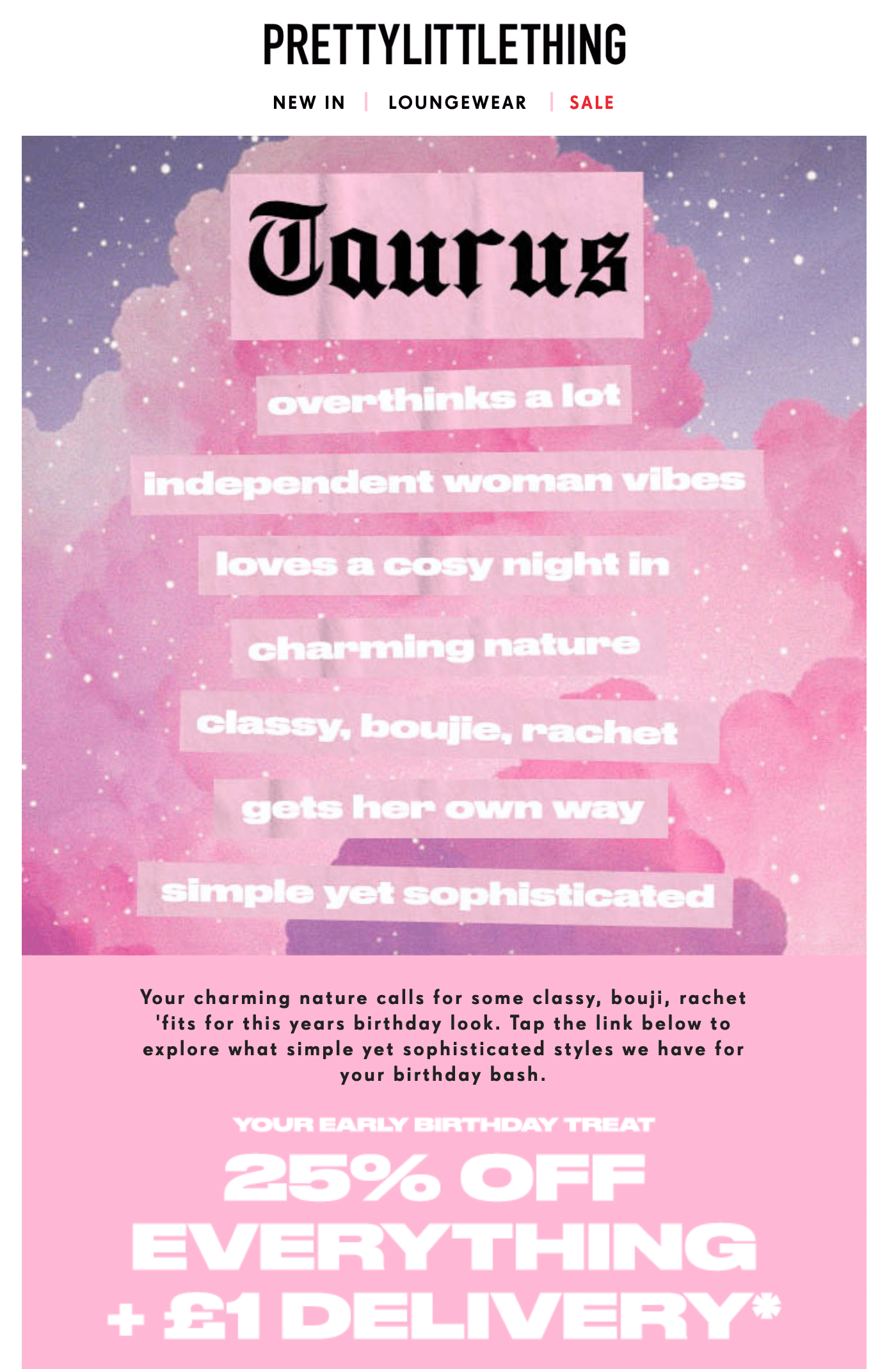
With marketing tools like Litmus Personalize by your side, personalization for eCommerce is easy to create and easy to scale.
This message is sent on a subscriber’s birthday (thanks to email automation), helping them personalize at scale.
SurveyMonkey
If a customer has been with your company for a while, it’s worth celebrating! SurveyMonkey, for example, sends users an anniversary email when they reach their first year with the platform.

This email is a perfect example of how to effectively use product usage or CRM data to show subscribers you truly know and value them.
Incorporating strategies like these will help keep your customers engaged and satisfied, ultimately leading to increased customer loyalty and repeat business.
Stand out in crowded inboxes
Create 1:1 experiences at scale with Litmus Personalize. Use live polls, countdown timers, and more to captivate subscribers.
Loyalty/advocacy stage: turn satisfied customers into brand advocates
Who better to evangelize your business than happy customers? Now that you know more about your customers, sending personalized emails makes them feel valued and encourages them to spread the word about their experience.
At this point in the email marketing funnel, you have cemented your relationship. Now, it’s time to show your appreciation and retain their business.
The loyalty/advocacy stage is also a key moment to continue providing value while opening doors for upsell opportunities.
Here are several emails that work well during this stage:
- Referral program: encourage loyal customers to refer friends or family in exchange for exclusive rewards or discounts.
- Collecting feedback: ask for customers reviews or testimonials to gain insights and improve your offerings, while also making customers feel heard. (Remember to follow up on how you implemented their feedback!)
- Thought leadership newsletters for your product and industry
- Upsell opportunities: emails that promote complementary products or upgrades based on a customer’s previous purchases. For example, a software as a service (SaaS) company might send an email suggesting premium features or add-ons relevant to the tools a customer has already purchased, leveraging personalization data to create a tailored experience.
Giving and receiving feedback is hard! But you can remove the barriers and make it easy for subscribers to share their thoughts by adding a Litmus Personalize Sentiment Tracker to your emails. All it takes is a click for a subscriber to cast their vote, and no coding experience is required to create one for your next email.

Don’t forget to keep high-value content a priority! Keep delivering resources like helpful guides, videos, and other forms of content to further enrich the customer experience and continue building trust well beyond the initial purchase.
“If you only expect email to drive end conversions, your funnel will dry up and fail to generate more emails for that bottom-of-funnel segment, which will affect your ROI.
In practice, investing more in email will lead to better ways to engage your top-of-the-funnel group and move them into a higher-intent segment. That’s not going to show up on your ROI dashboard, but it’s critical to how you’ll get there.“
Reactivation/win-back stage: reignite the spark
Has your customer left? It’s not too late, if they’re a subscriber. Show them you’re still here, offering value, with something new and exciting to bring them back.
A well-timed, personalized win-back email—complete with a special offer or a glimpse of what’s changed—can do wonders. Keep it fresh, relevant, and remind them why they loved your brand to begin with.
Industry-specific email funnels & examples
Financial services
Ellevest promotes their email list on their website and social channels, highlighting the type of content and value subscribers will get from signing up.
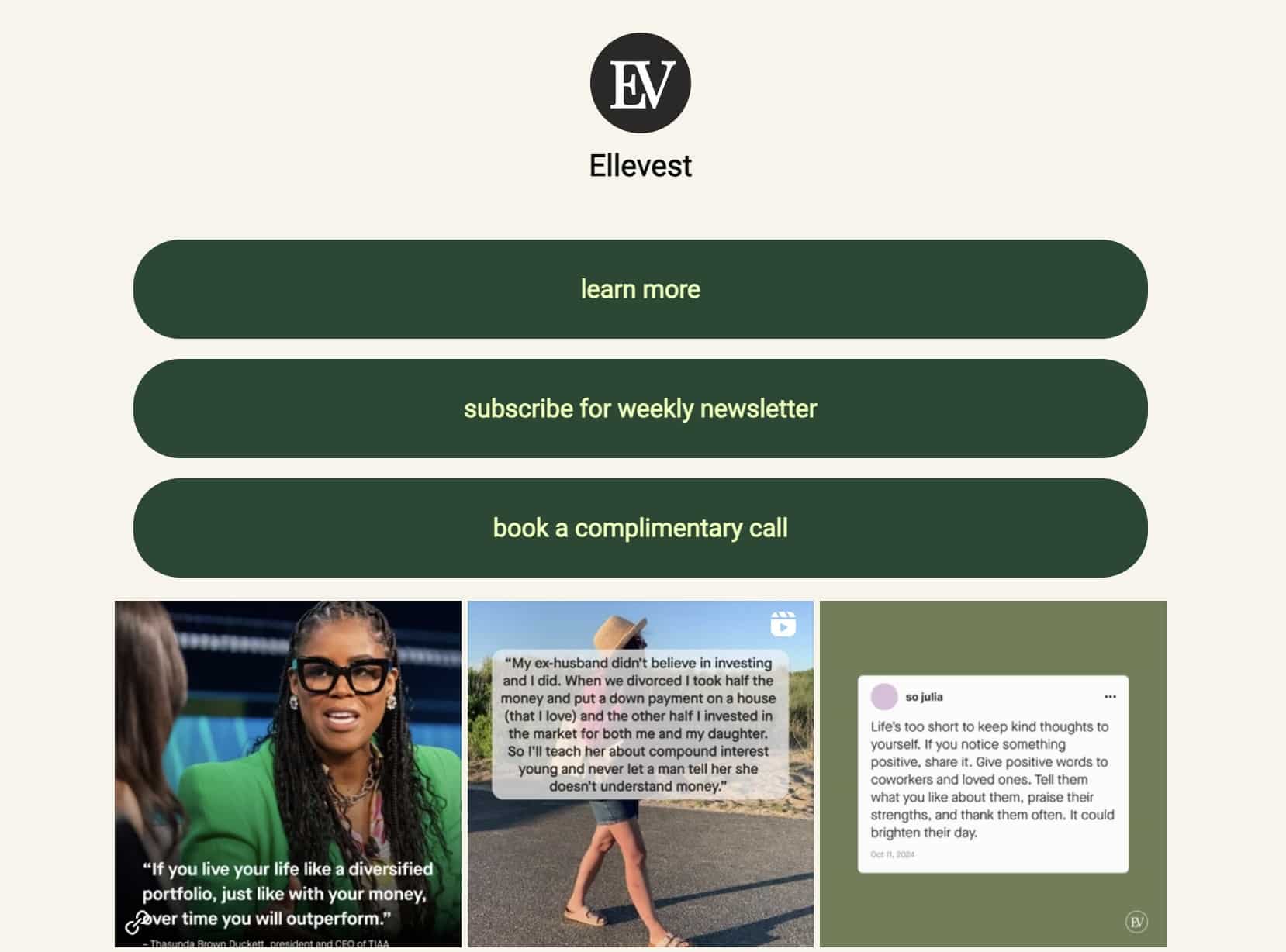
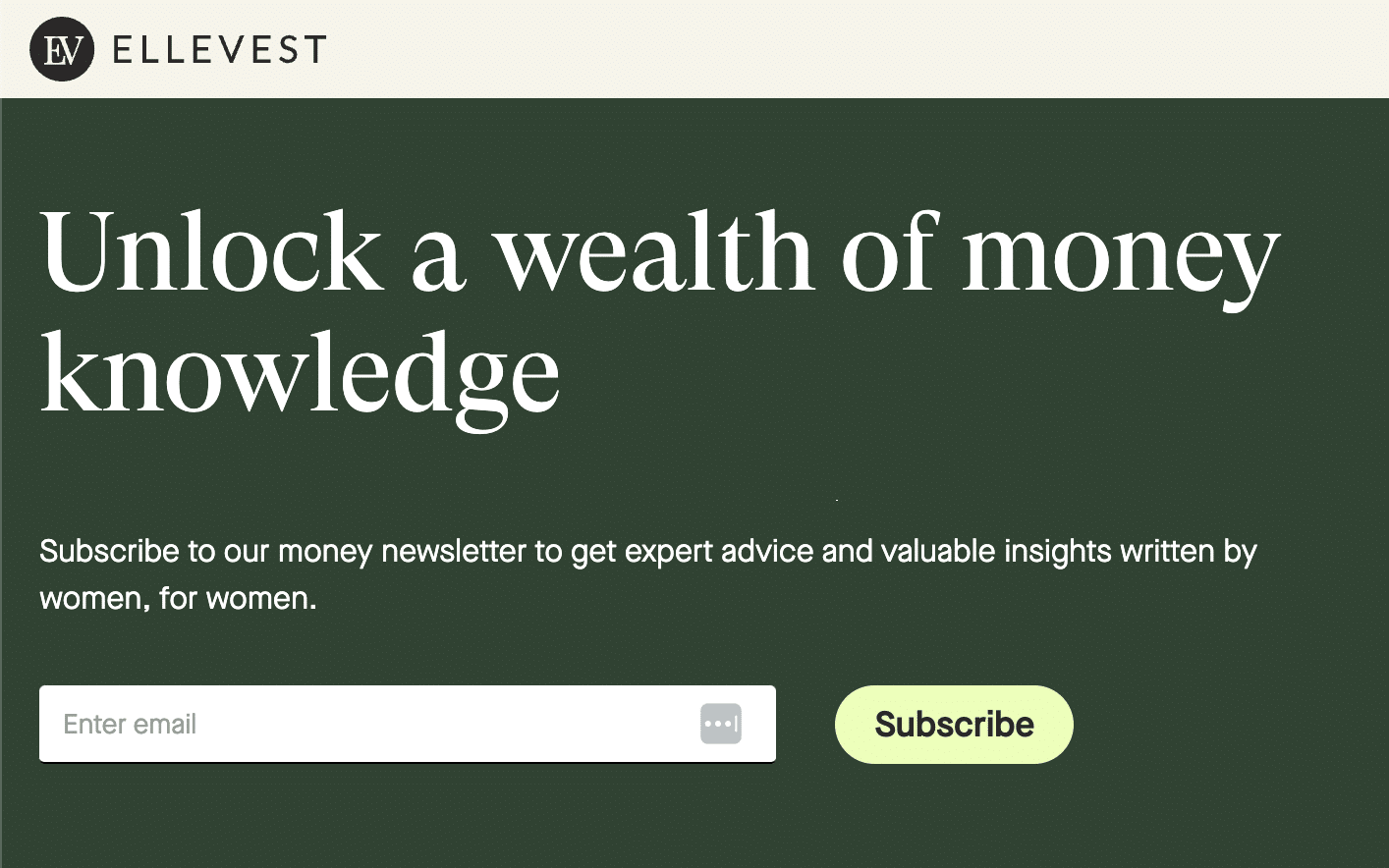
These subscriber’s are now in the awareness stage of the email funnel.
From there, subscribers start receiving emails that warmly introduces their brand, providing educational content, taking form in a newsletter:

As a subscriber moves down the sales funnel and eventually converts to a customer, they’re welcomed warmly to Ellevest with a welcome email that clearly outlines “what’s next” for customers seeking their next step:
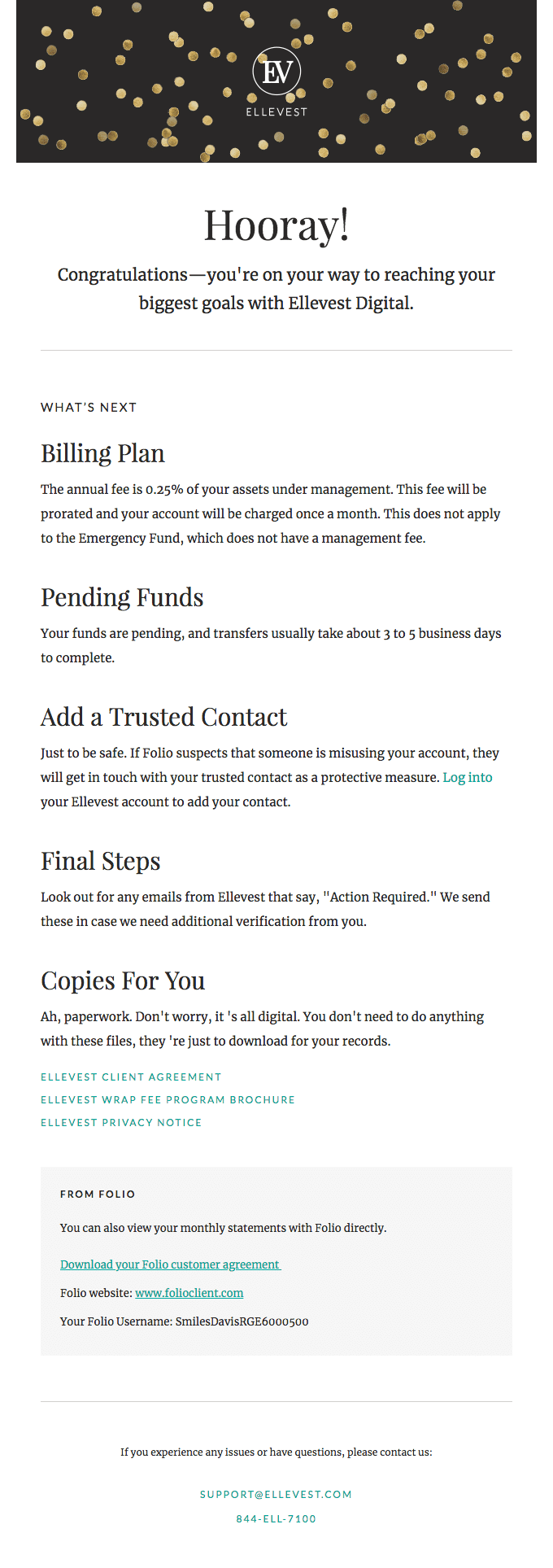
Following shortly is an onboarding email, reminding subscribers of the value their platform suggests by showcasing what’s possible through the Ellevest solution:
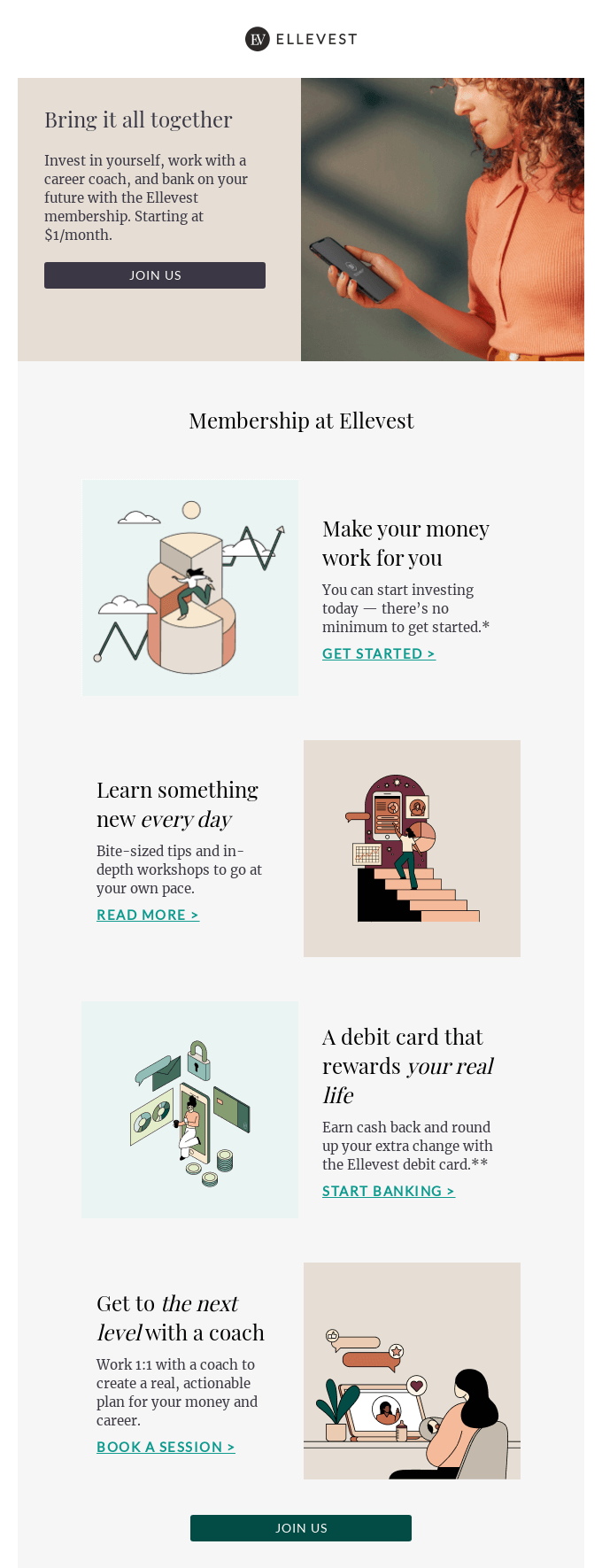
Over time, when a subscriber meets the loyalty/advocacy stage, Ellevest takes the opportunity to upsell other product offerings:
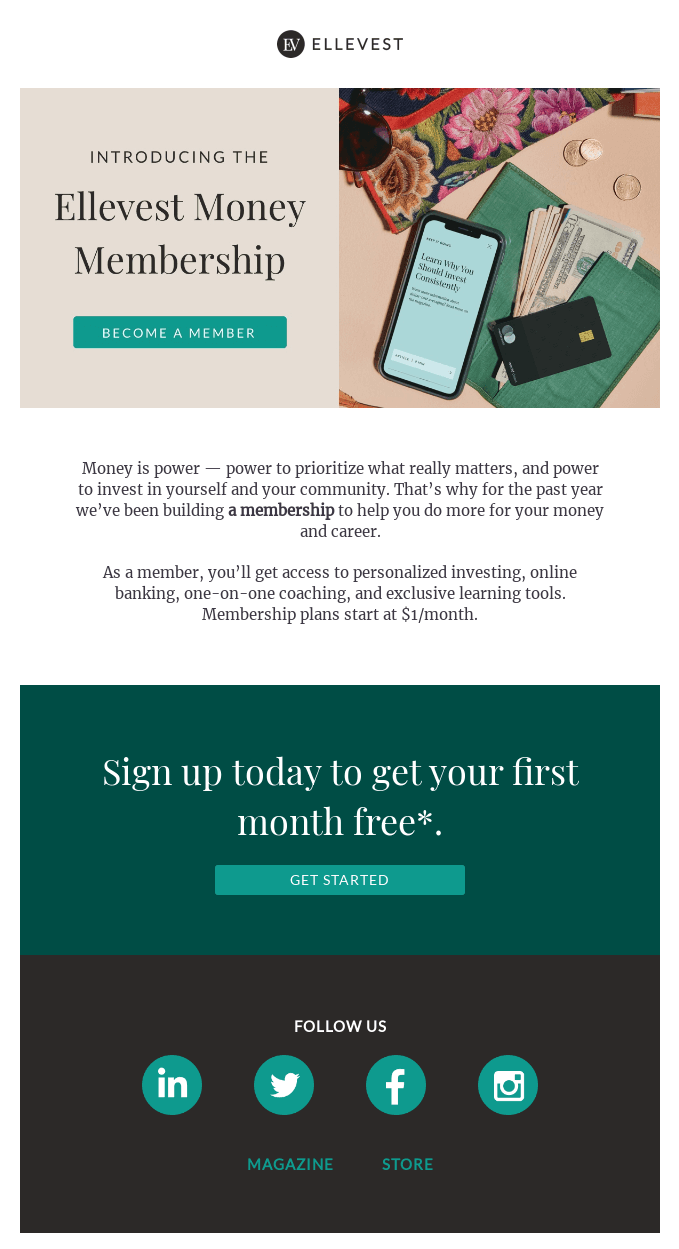
Retail & eCommerce
To promote their smart home line, Google sends a newsletter featuring a series of videos on how Google Nest “makes learning new things easy.”
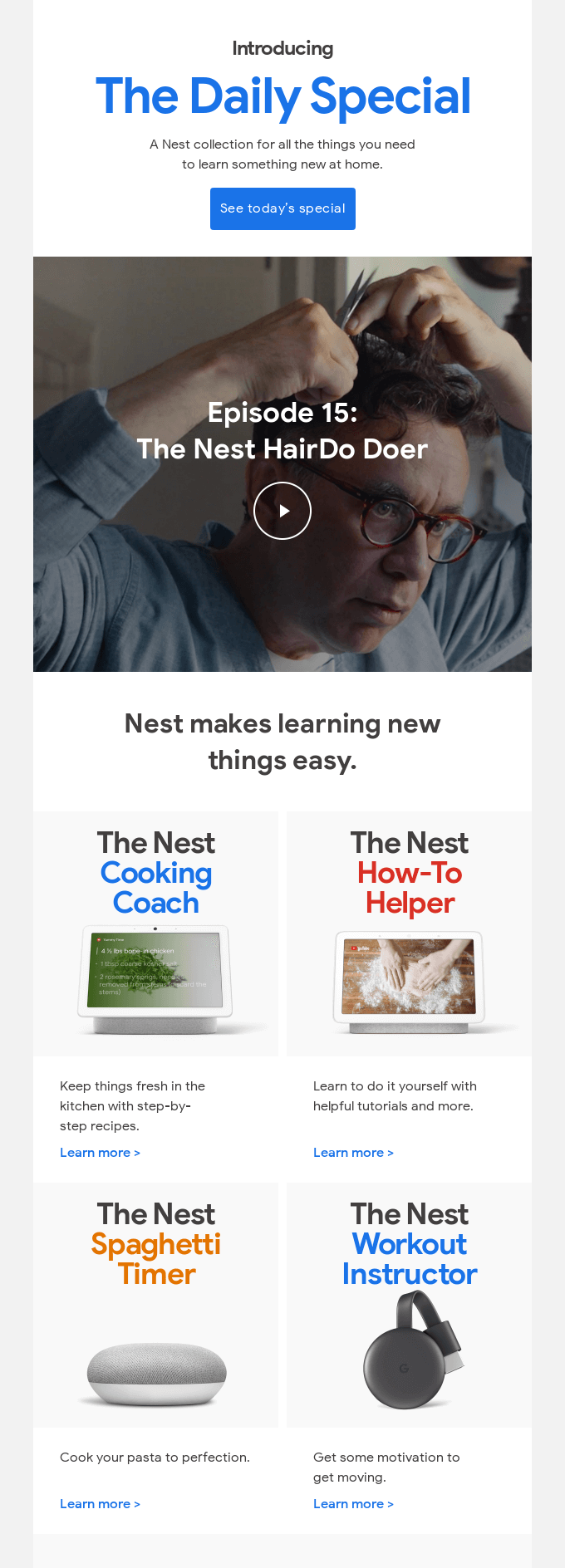
A newsletter like this is great for subscribers in the awareness and retention stage.
For subscribers in the consideration stage, an email that introduces a new feature, partnership or integration can be that final push to help a prospect become a customer, like Nest shares below with their Zoom integration.
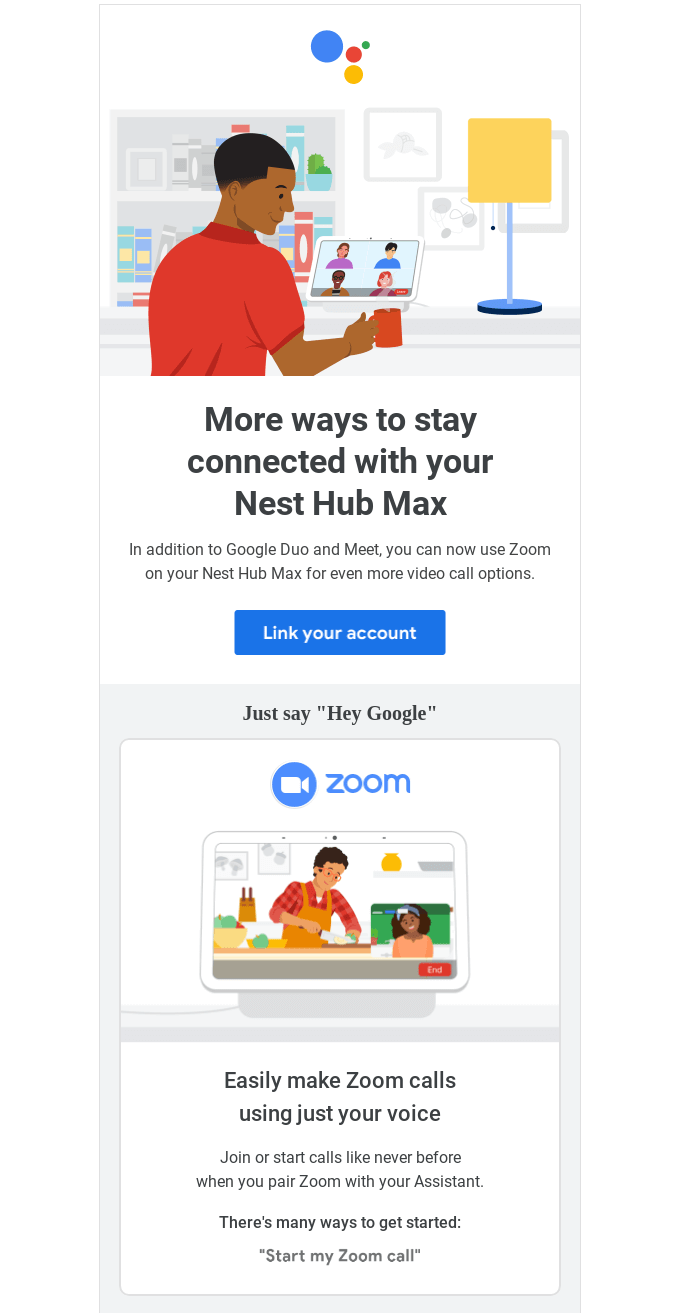
Here, Nest offers a 30-day trial for Nest Aware, a paid subscription service, driving action with “Do even more with your Nest devices” for subscribers in the retention stage.
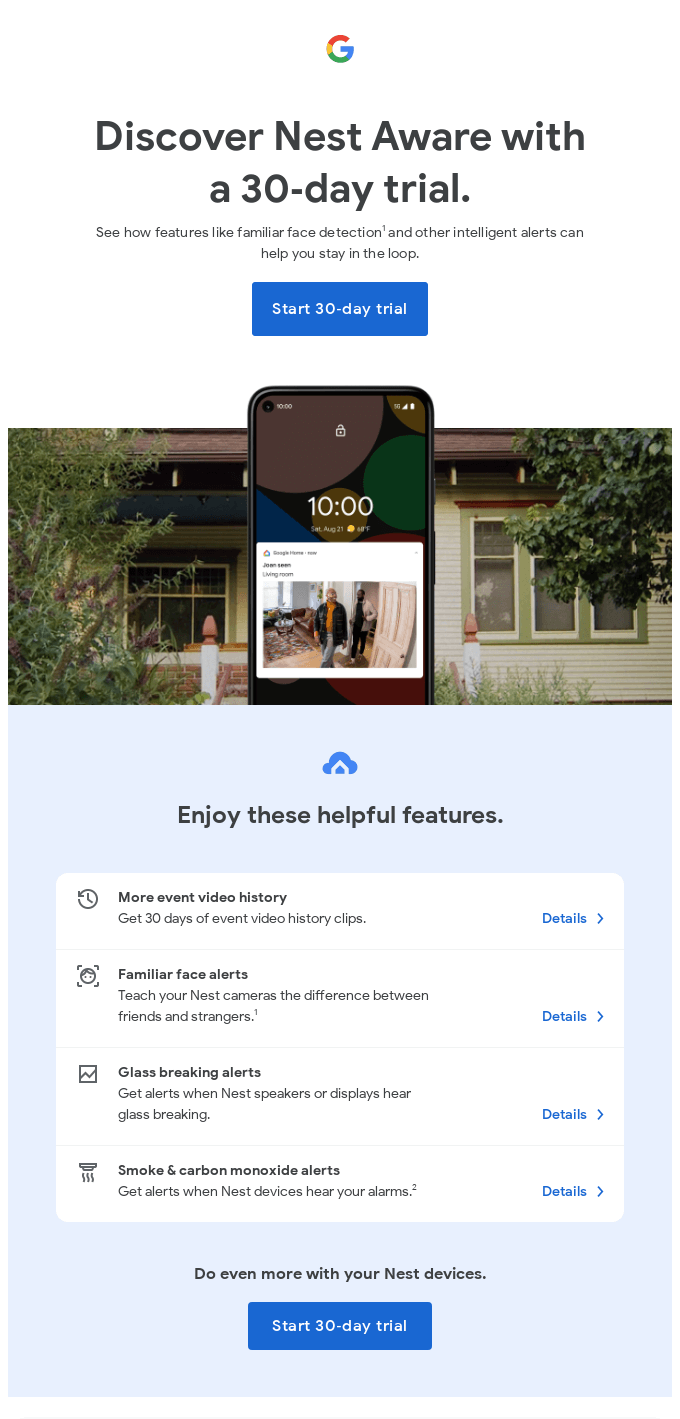
Software as a service (SaaS)
Campaign Monitor sends a simple “thank you” email to welcome and onboard new customers, providing a call-to-action (CTA) for them to easily login to their account.
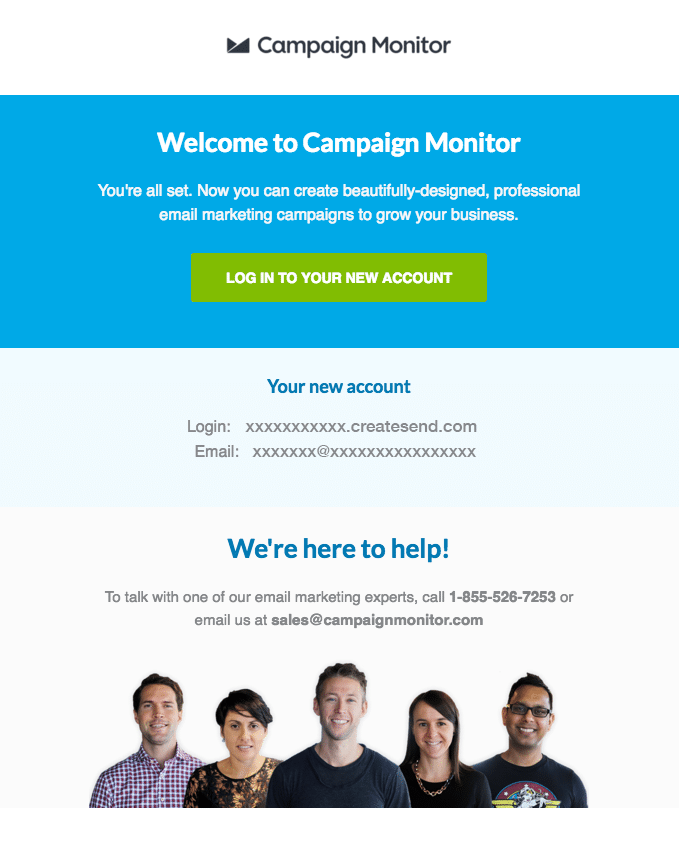
The next email features a primary call-to-action of getting customers inside their product. They highlight the ease of use, encourage new customers “Create your first email” in the subject line of the email:
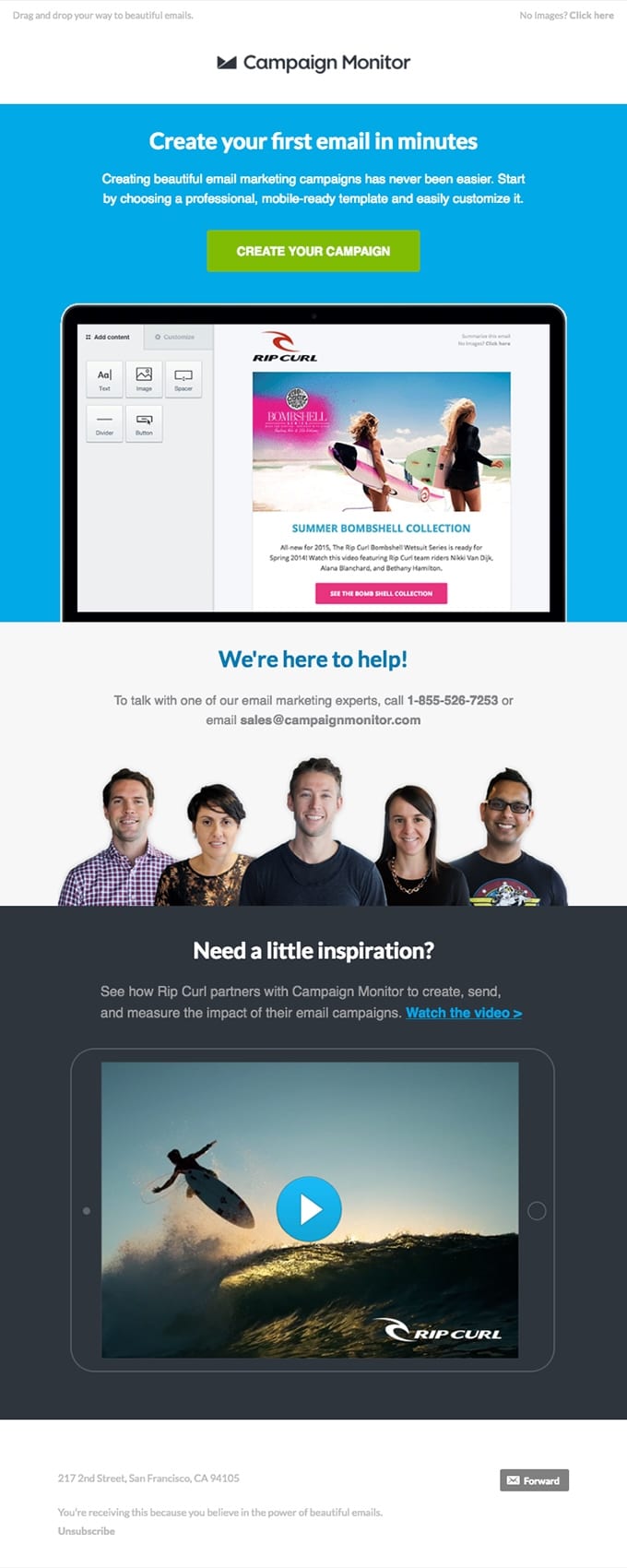
Parsley Health sends a newsletter called “Rooted,” a weekly newsletter filled with tips, articles, and other content about “holistic medicine essentials” that add value to subscribers’ quality of life.

A newsletter like this is great for leads in the awareness stage as well as subscribers in the lower part of the funnel, like the retention and loyalty/advocacy stage.
For prospects in the consideration stage, an email clearly outlines the benefits of your product or service can be effective for nurturing on the fence subscribers. Parsley Health does this below, and closes with a limited-time offer to sweeten the deal:

How will you use the email funnel?
When it comes to driving conversions, optimizing your email funnel is key to maximizing your marketing efforts. By delivering targeted content to the right audience at the right time, you can turn new leads into loyal customers.
Crafting a well-planned email sequence allows you to guide your target audience through every stage of the funnel, ensuring they receive the most relevant information based on their needs and interests.
Ready to take your email marketing strategy to the next level? Start refining your funnel today and watch your results soar!
Drive engagement with dynamic content
Personalize emails with live polls, personalized images, scratch-offs, and more. No coding experience required. Learn more.
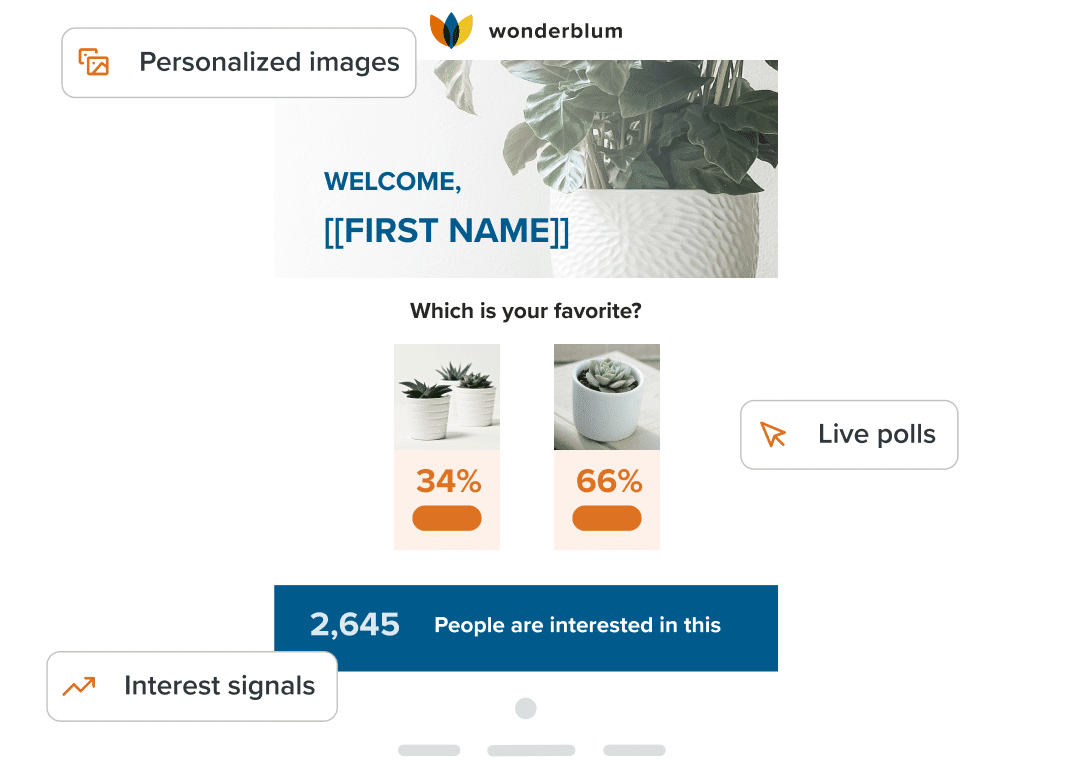
The post From Clicks to Conversions: How to Optimize Your Email Funnel appeared first on Litmus.
https://www.litmus.com/blog/how-to-keep-email-marketing-funnel-engaged